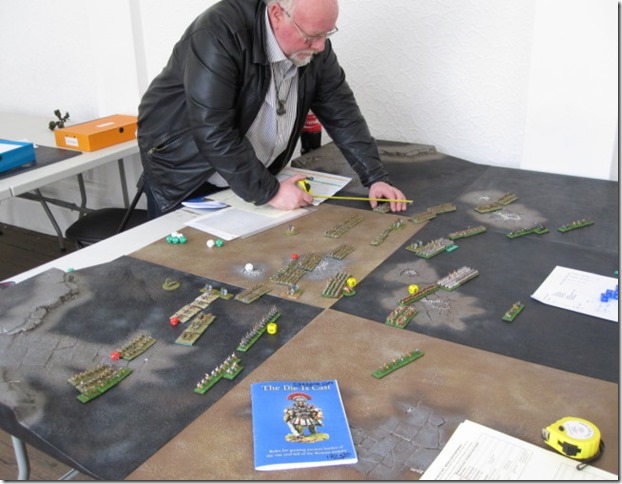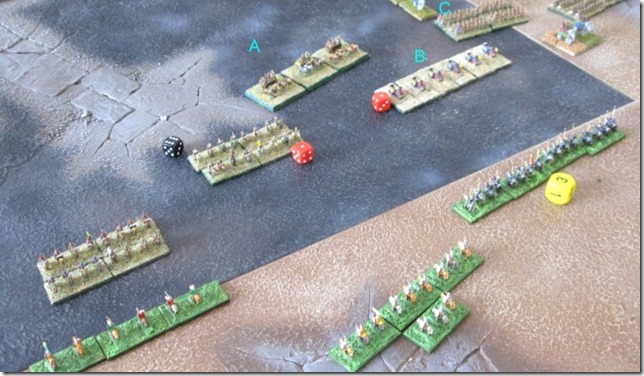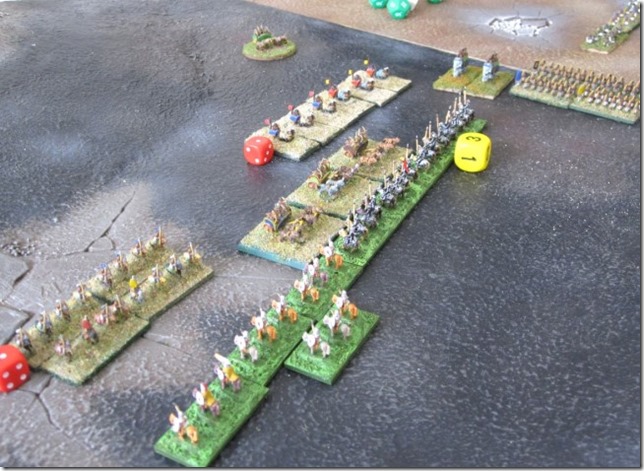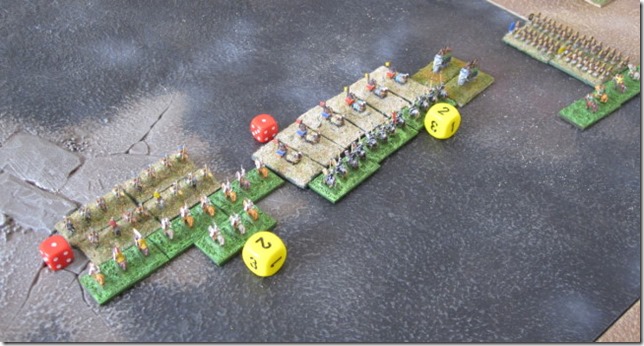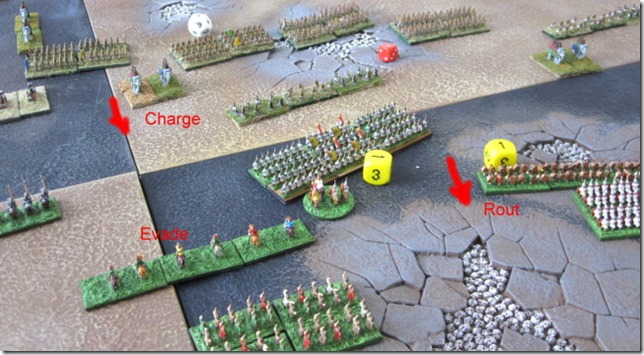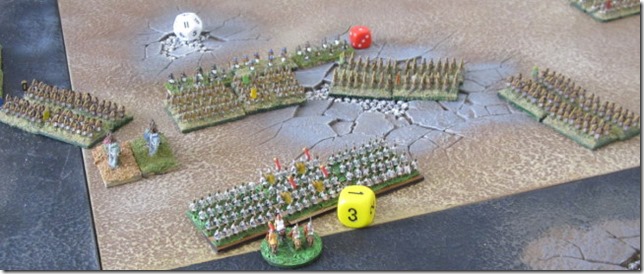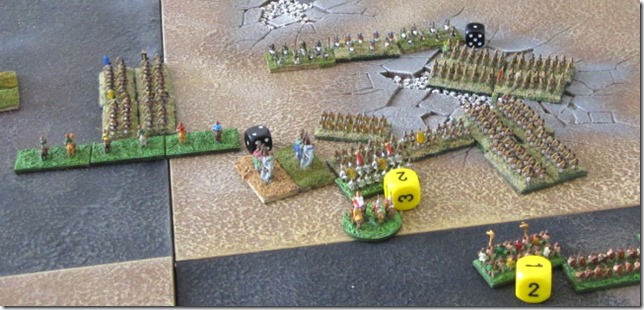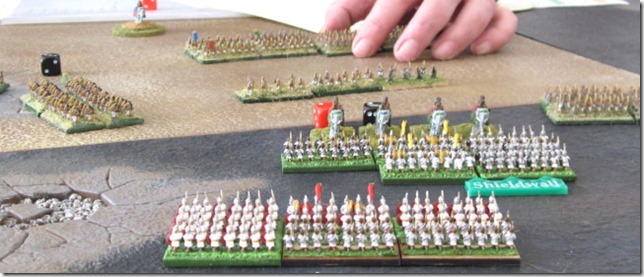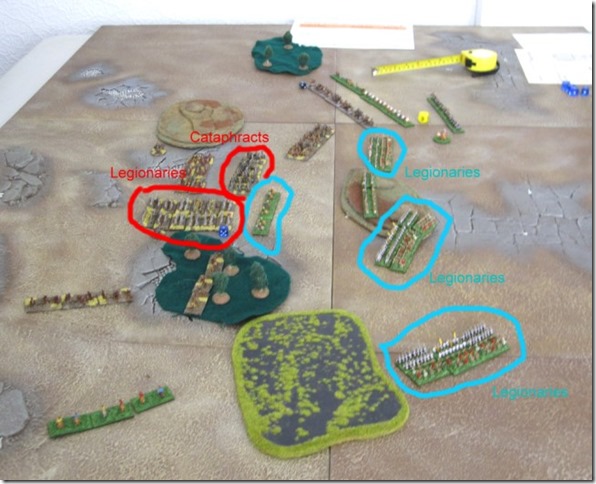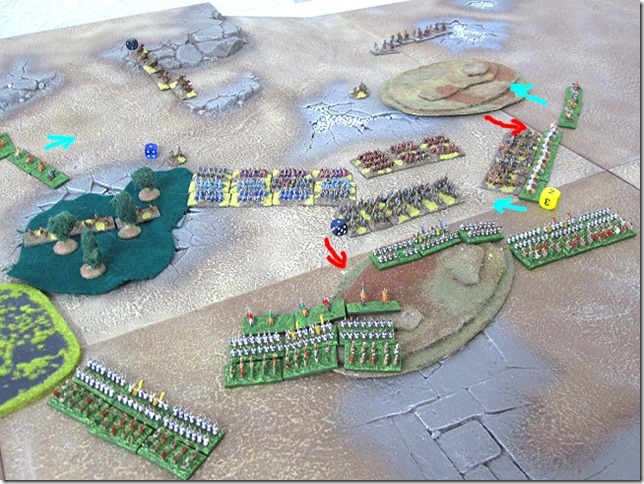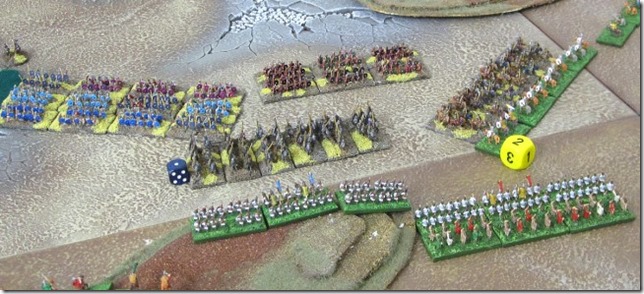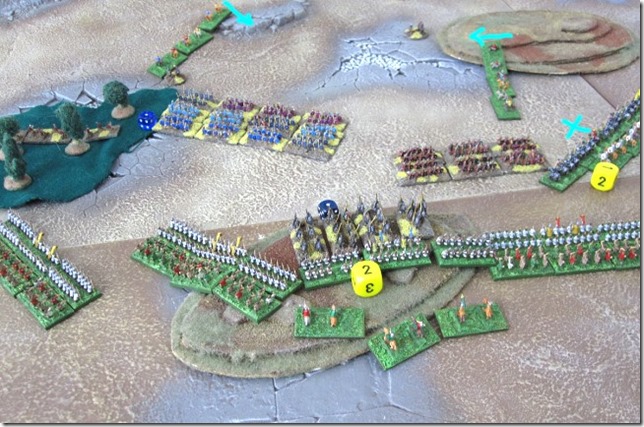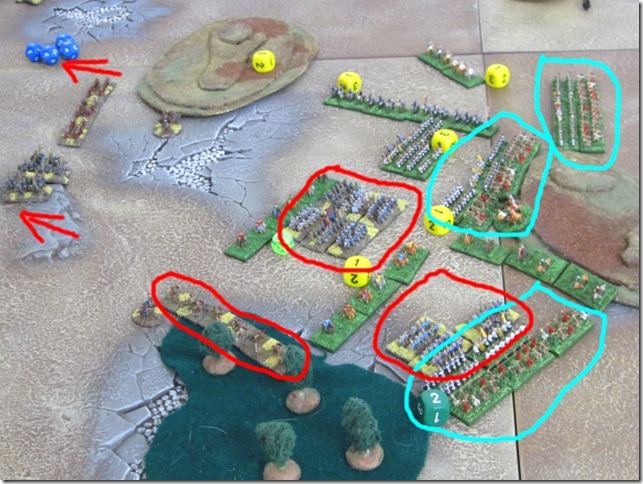Learning some lessons from the previous weeks Late Roman civil war, we decided to go for a larger game. 1500 points per side ‘fantasy’ game of Indians vs Late Romans.
I dumped the rear rank of legionary archers that I had used in my last game and instead opted for pure units of legionaries.
So the army was like this
General 2/2
3 units of legionaries (one upgraded to elite)
2 units Roman heavy cavalry
1 unit of cataphracts
3 units of horse archers (all upgraded to steady)
1 unit of javelin armed light cavalry
2 units of auxlia
against, well I am not really sure but it looks like a lot of Indians. Somewhere in that lot were 8 elephants, 5 heavy chariots and 3 light chariots.
My opponent (Dave) is moving his army
Following the course of the battle from Roman left to right. See below.
At the end of the second turn on the Roman left, I am forcing the Indians back. I have charged with all three units of Roman cavalry (one light, one heavy and a cataphract unit) to which Dave has countered by evading all three of his units (on the black table board), avoiding contact. Dave has opened fire with three of his units A the heavy chariots, B the evading light chariots and C a unit of foot archers, causing 3 hits on the cataphracts. Just short of the 4 hits needed to remove a base of cataphracts, so I need to get them into combat before they get whittled down.
Situation after movement on turn three, I have charged again, again failing to catch anything with the heavy cavalry or cataphracts but the light cavalry (on the left of the picture) catch a unit of Indian cavalry, fight them and break them – under TIDC catching an evading enemy is not an automatic break, the evaders get a chance to fight back but being hit in the rear it is unlikely that they will win. The Indian heavy chariots are moving forward to confront the cataphracts.
At the end of movement of turn four, the Indian heavy chariots have been charged by both the cataphracts and the Roman heavy cavalry. The Indian chariots had declared a charge against the Roman cataphracts but that had been cancelled by the charge of the Roman cavalry against them, the heavy chariots cannot evade (not an option for them) and cannot counter-charge because the heavy cavalry is within half their charge move, so the heavy chariots have to hold and take the charge at the halt. The Indian cavalry and light chariots, no longer charged themselves, turn round and face their enemy. On the right of the picture you can see the elephants which unform both the cataphracts and the Indian light chariots (too close, despite the Indians being used to elephants), and some Indian archers shooting at the charging cataphracts.
The Indian heavy chariots were heavily defeated (7-1) and broke. The cataphracts pursued into the light chariots, the Roman heavy cavalry pursued into the Indian medium cavalry. But the elephants also charged the flank of the cataphracts and a unit of Roman horse archers charged into the flank of the Indian archers. We ran out of time at this point but the cataphracts would have certainly been beaten, the cavalry/cavalry combat would probably been a victory to the Romans and the light cavalry attack might or might not have been successful.
In the centre, things did not go the Roman way. On turn three, I had charged into a unit of Indian skirmishers with a unit of auxila but thrown awful morale dice and routed rather than charged. The Indian elephants charged a unit of horse archers who wisely evaded the elephants. But all that did leave my legionaries (led by the Roman general) sitting out there with their flanks exposed.
The situation in the centre just continues to get worse for the Romans
Situation in the centre at the end of the game. Attacked frontally and then in the flank the Roman legionaries are chopped to pieces. The Roman auxila (bottom right) have again failed to roll good dice and have become Shaken and refuse to support their general, the survivors would almost certainly be slaughtered and the general killed. Motto, keep that combat line intact and don’t expose your flanks to the enemy. Big mistake on my part.
On the Roman right a unit of Roman legionaries come under threat by four elephants and wisely form shieldwall the resist the charge. Meanwhile a unit of elite legionaries take up position behind them, either to reinforce the melee next turn if the other legionaries hold the elephants or to hold the elephants if they break through.
Well it was a break-though by the elephants, wiping out the front unit of legionaries. But the elite legion and the auxila held, fighting in the next round (and last round of the game) inflicting another 7 hits and with the 5 hits that the elephants had suffered, three elephants would be dead, in effect removing that threat. But the loss to the legionaries was grievous, 2 entire bases of legionaries killed (8 hits) and 3 hits (thats what the yellow dice represent) on the auxila. So a combat result of 11-7, a loss to the Romans but not a major one.
On the Roman right, a unit of heavy cavalry and a unit of horse archers gradually fall back in front of the advancing Indians.

But something has to be done to stop the Indian heavy chariots from getting onto the flank of the Roman infantry. So the heavy cavalry charge the heavy chariots (who are also charging them). The combat was almost complete destruction of the Roman cavalry but one chariot was destroyed and that automatically made the Indian unit shaken, with no possibility to further advance against the enemy.
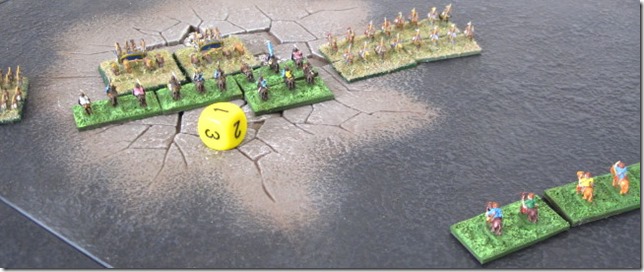
So with the Roman right gone, the centre and general killed and the cataphracts wiped out, this was a major victory for the Indians.
The Romans had the advantage of mobility with their light cavalry but I failed to make the most use of it. The cataphracts are stunningly formidable but need light cavalry in support, both to screen them from missile fire but also to catch any enemy trying to get away from their advance. And as for the legionaries, the motto should be maintain the line and don’t let the enemy get at your flanks!




